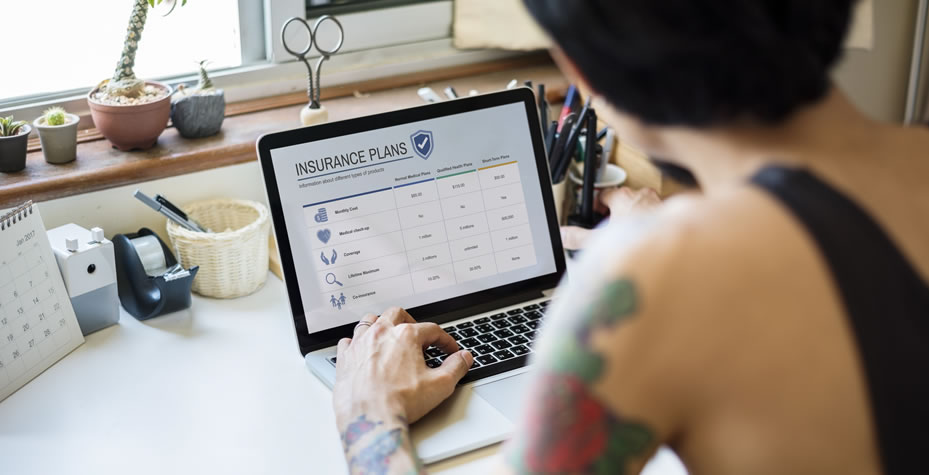
In today’s market, you may be more inclined to search for a quality used car over a brand-new vehicle, but the problem that surrounds that decision is that buying used cars can be riskier than purchasing new ones.
You can certainly purchase a certified pre-owned (CPO) vehicle for more peace of mind, given that they are low-mileage, relatively newer vehicles that come with a manufacturer’s warranty for used cars. But, the model or options you want may not be available. In other cases, even if you spot the exact car you’re looking for, you may discover that it’s been woefully neglected and a financial nightmare to sort out.
Fortunately, you don’t have to make a blind purchase. With the straightforward used car buying tips outlined below, you’ll be able to sniff out the deal you’re looking for. Just remember, of course, that even if you buy the most reliable, well-kept car you can find, it can still break down unexpectedly, which is why it’s wise to protect yourself with a Vehicle Service Contract.
What to Look For in a Used Vehicle
First up on our list of used car buying tips is to consider the most important factors for a suitable used car — age, mileage, and reliability:
1. Age
A 20-year-old car with just a few thousand miles on the odometer has likely spent most of its life unused, which is a recipe for unseen problems. Rubber hardens and breaks down over time, which means that the car’s trim, hoses, and tires can be dry-rotted. In addition, if the engine hasn’t run in years, it could be seized, and if the fuel in its tank is more than six months old, it might have lost its combustibility.
Now, there are cases where a car’s owner may have taken meticulous care of the vehicle and kept it in like-new shape, but it’s a little bit of a dice roll. As such, you’d be better served by a lightly driven, reasonably maintained example with 30,000 to 40,000 miles.
2. Mileage
On the subject of mileage, every car reacts differently when its miles pile up. You’ll need to thoroughly research the specific vehicle you want and check its major service intervals, which are usually 30,000, 60,000, and 90,000 miles, but they can vary by car.
The required maintenance at these miles can involve duties such as:
- Replacing timing belts or chains
- Replacing spark plugs
- Flushing fluids, such as power steering or transmission fluid
- Replacing filters
- Inspecting and servicing climate control system and parts
- Inspecting the vehicle for any issues that need addressing
Understanding a car’s major service intervals is vital, so much so that it is one of the most important used car tips we can offer!
You might come across two examples of a vehicle you want, one with 55,000 miles and the other with 60,000 miles, for instance. While the example with fewer miles might seem like the better buy, it could have an expensive service on the horizon, whereas the car with the higher mileage may have already had it taken care of.
Also, keep in mind that Vehicle Service Contracts through CarShield have coverage with unlimited miles as long as you cover your car.
3. Reliability
No list of tips on buying a used car can be rounded out without mentioning reliability. It’s important to research the overall reliability of specific vehicles, as just their age and mileage alone won’t provide enough information. Some brands and models may offer incredibly poor reliability regardless of age or mileage, while others are dependable for hundreds of thousands of miles with only basic maintenance.
Starting Your Search
As for where you should look for a used car, here are several common places to shop:
1. Buying from Dealerships
At a dealership, you’re able to experience the ergonomics, performance, and various features of a car for yourself. Dealerships also offer a greater variety of payment options, such as cash or credit, and will likely offer loan plans and extended warranties for used cars (another great option is a Vehicle Service Contract). You may even be able to trade in your current car toward the purchase.
In addition, it’s in a dealership’s best interests to be transparent, given that their livelihood depends on the trust of their customers. So, you also have more consumer protections with dealers. If there’s an undisclosed issue with a used vehicle they sell you, for instance, you may be able to take legal action. Many dealerships will provide free Carfax reports so you can see the vehicle’s service history in advance.
You should also keep in mind that brand dealerships sell CPO vehicles, and even though one may be more expensive than a comparable example from a used car dealer or private party, the condition tends to be better.
2. Buying from Private Parties
Buying a car from a private party, whether you found it through newspaper classifieds or online platforms such as Craigslist or Facebook Marketplace, can be a fantastic way to get the lowest possible price on the exact car you want. With no overhead or other costs, there are no hidden fees or markups.
However, a private party seller has no obligation to be honest about the condition of the car, which means you’ll be taking a bit of a gamble should you choose to pursue private sellers.
3. Buying from Online Marketplaces
There are plenty of sites, such as CarGurus and Autotrader, where dealers and individuals alike post their cars for sale. These sites allow you to refine your search so you can find exactly what you’re looking for. You can narrow searches by brand, model year, mileage, specific features, body styles, and colors. You can also expand your search radius depending on whether you’re willing to travel to find the car you want. The site can even tell you whether a price is a good deal or not.
A Note About Financing
If you’re buying through a dealer, getting a loan will be easier, as dealers have finance offices and can assist you with the paperwork. You’ll still need to be pre-approved, though, and while you can get approval at the dealer, you’ll save money if you are pre-approved before going shopping. For buyers looking at vehicles offered by private parties, you’ll have no choice but to find your own financing.
Whichever route you take, you’ll get better rates and lower down payment requirements if you have a high credit score. Speak with banks, finance companies, and credit unions about financing rates and discuss your budget.
How to Inspect a Used Vehicle
Start by asking questions, especially if the vehicle listing doesn’t give you all of the information you need. Ask about the following aspects of the car:
- Features
- Condition
- Whether it has ever been in an accident
- Service records
- Open recalls
- Corrosion
- Deferred maintenance
- Interior condition, such as stains or odors
- Tire tread
Many times, you can weed out potential vehicles with these questions. If you’re going to check out a car yourself, make a checklist of items you will look for. Check for broken glass, squeaks, rattles, missing parts or trim, worn gas struts on the hood or trunk, signs of rust, repainted panels, and any other issues that may be difficult to glean from pictures or online descriptions.
It’s worth paying a mechanic to perform a pre-purchase inspection, as they’ll perform a more thorough inspection than most average consumers can provide, and their services can often price out potential repairs.
Steps to Take When Buying Used
Protect yourself by arming yourself with knowledge! Here’s a final checklist for your used car shopping excursions:
- Research the vehicles you want, from the brands to the models to the model years. Make yourself aware of common problems and major service requirements.
- Inspect the car in person and take it to a competent mechanic for a thorough inspection. They’ll let you know about the condition of the car and how easy (and expensive) it will be to service.
- Get the vehicle’s history through both a Carfax and all the service records you can get your hands on.
- Take a test drive. Feel for worn ball joints (the wheel wobbles while braking). Make sure the brakes feel solid and don’t squeal. Feel the alignment and tire balance. Make sure the car idles smoothly and accelerates without hesitation. Check for looseness in items such as the shift lever, turn signal stalk, wiper stalk, and all latch handles.
- Make sure the price is fair. Use resources such as Kelley Blue Book and J.D. Power to see what people should be paying.
- Be ready to negotiate and never overpay. If the price can’t come down to a number you’re willing to pay, walk away and look elsewhere.
If you follow these tips on buying a used car, you’ll have a much better shot at ending up with the vehicle you want at a price you’ll be happy to pay.
Protecting Your Vehicle With a Vehicle Protection Plan
Buying used cars can save you a lot of money, but without the right Vehicle Service Contract in place, an unexpected breakdown could shatter your budget.
Find the right protection plan for you through CarShield and defend yourself against unforeseen expenses! With plans to fit any budget, you are sure to find the right one for you.
*Pre-existing issues are not covered. See contracts for exclusion.








